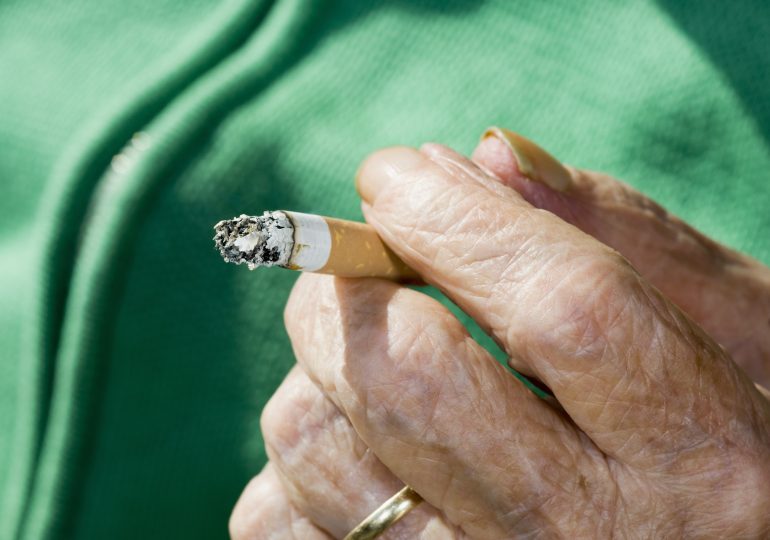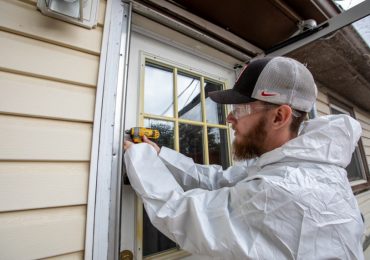An endless supply of trendy takes in recent years claim that among young adults, smoking is cool again. But though they may be hanging from the lips of major influencers and starlets, cigarettes have far more fans in an older demographic, according to new data on adult smoking behaviors in the United States. From 2011 to 2022, the prevalence of smoking habits decreased in every age bracket except one: the 65-and-up crowd.
[time-brightcove not-tgx=”true”]
Public health campaigns and programs outlining the dangers of smoking aren’t really aimed at older adults, says Rafael Meza, an integrative oncologist at the BC Cancer Research Institute in Vancouver and the lead author of a new study on adult smoking. “In the U.S., smoking really has a generational pattern,” he says.
Meza’s new analysis, published Dec. 1 in JAMA Health Forum, shows that while people ages 40 through 64 smoke the most, Americans 65 and above are picking up the habit in a way nobody else is. While the prevalence of regular smokers dropped to 15.2% down from 21.2% in a little over a decade for that middle-aged group, older adults saw an increase from 8.7% to 9.4% in the same time frame.
There are a few explanations that are easy to point to in terms of these generational divides. For one, many older Americans today were likely first exposed to cigarettes and tobacco before widespread public health interventions aimed at smokers began—if not before it was even shown decisively that smoking has true health consequences, says Meza. Cigarette manufacturers weren’t required to print health warnings on the side of cartons until 1966, 12 years after the paper that definitively confirmed a link between smoking and lung cancer was published. If today’s older adults weren’t yet old enough to smoke themselves by then, they may have still seen the habit normalized by a parent, friend, or older sibling. “In a way, these are the consequences of what was happening during those times,” Meza says.
Add that to the fact that smoking-cessation programs and tools aren’t always accessible to everyone, and it’s easy to understand how a habit can persist. The U.S. Food and Drug Administration, for instance, has approved only two nicotine-free smoking cessation therapies, both available by prescription only. Though they work fairly well, uneven access to health care can make getting on these medications in the first place an impossibility for many. Indeed, when Meza broke down the data from age group by income level, wealthier Americans in the younger three age groups saw steeper drop-offs in smoking behaviors than their poorer counterparts. Similarly, although smoking behaviors increased overall for adults 65 and older, prevalence of the habit in the wealthiest subcategory alone did decrease.
Read more: Cigarette Smoking in the U.S. Drops to Lowest Level Since 1965
Advertising and lobbying tactics used by major tobacco companies are also partly to blame for the fact that interventions and other attempts to educate haven’t appropriately reached older adults, Meza says. These brands have a well–documented history of targeting specific groups based on age and ethnicity in their advertising. In the 1980s, for instance, cigarette advertisements were especially prominent in magazines aimed at teens and young adults—many of whom make up or are quickly approaching the 65-plus age group today.
Still, none of this explains why the last decade has seen an increase in smoking behaviors among older adults. Why pick it up as a new habit, knowing what we know today?
Jie Yang, a gerontologist and assistant professor at East Carolina University, blames another major public health problem: loneliness. In a 2022 study, Yang found that loneliness in adults 65 and up was associated not just with smoking overall, but with the number of cigarettes smoked per day. In the depths of isolation and despair, some people think, “Even if I have lung issues, I only have so many years left. What am I afraid of?,” Jie says. “It’s almost a confidence issue that they don’t think they’re able to quit.”
It’s notable, then, that recent messaging on smoking from the White House has explicitly included older adults. In a June 2023 forum put on by the Biden Administration, the U.S. Department of Health and Human Services announced work on new smoking cessation efforts that increasingly focus on equity in opportunities to quit, the exact details of which have yet to be released. The forum highlighted the importance of expanding access to treatment for lung and other smoking-related cancers, the brunt of which falls on older adults. Biden has also supported a popular push for a ban on menthol cigarettes.
It’s also worth “celebrating” the good in the new data, says Meza. “Smoking is really collapsing among adolescents,” Meza says, “There is a dramatic decrease that just doesn’t seem to be stopping.” This is a great sign that the interventions of the past decade, which have mostly been focused on these age groups, have been successful. Hopefully, that means that reaching older adults won’t require reinventing the wheel.
Leave a comment









